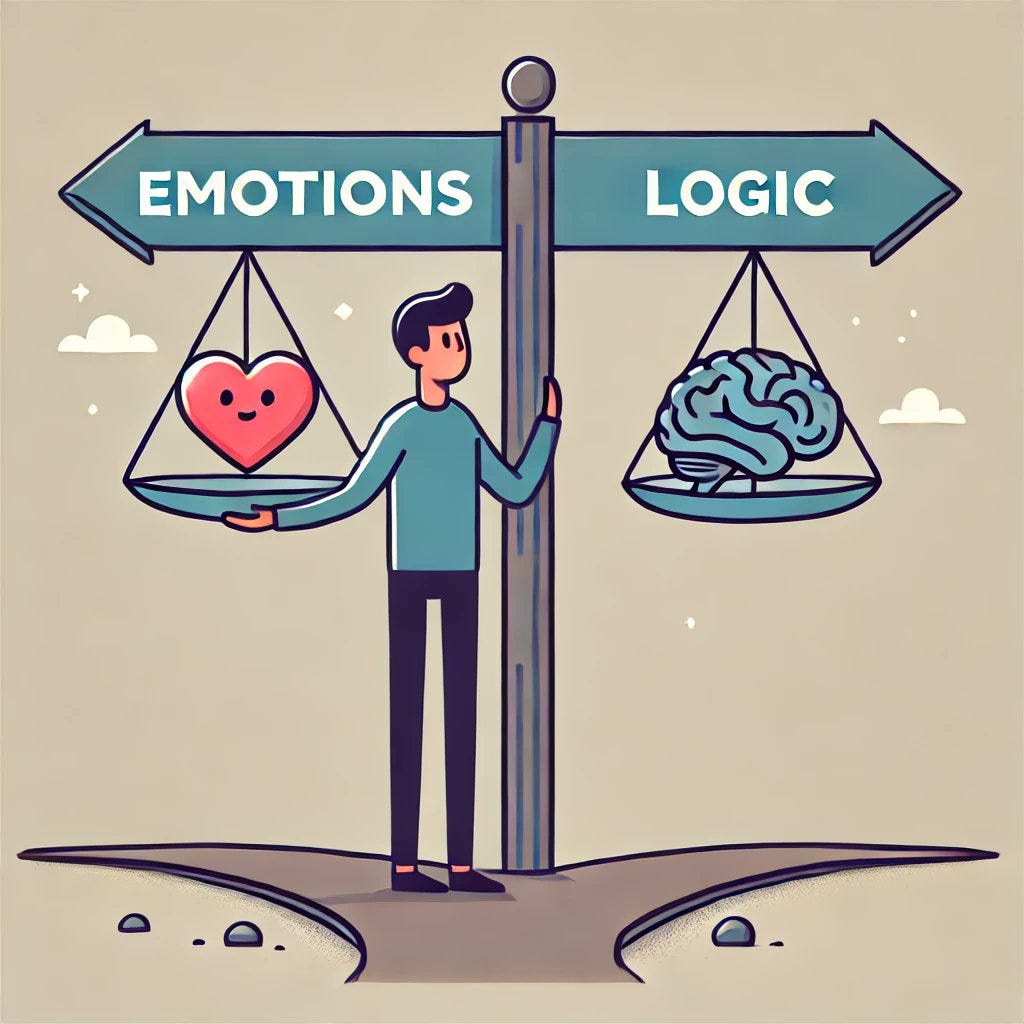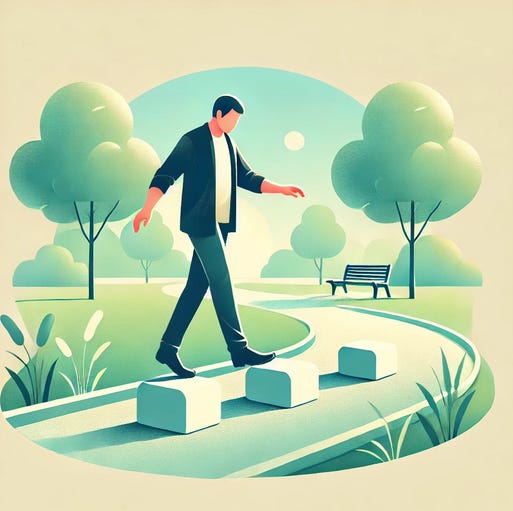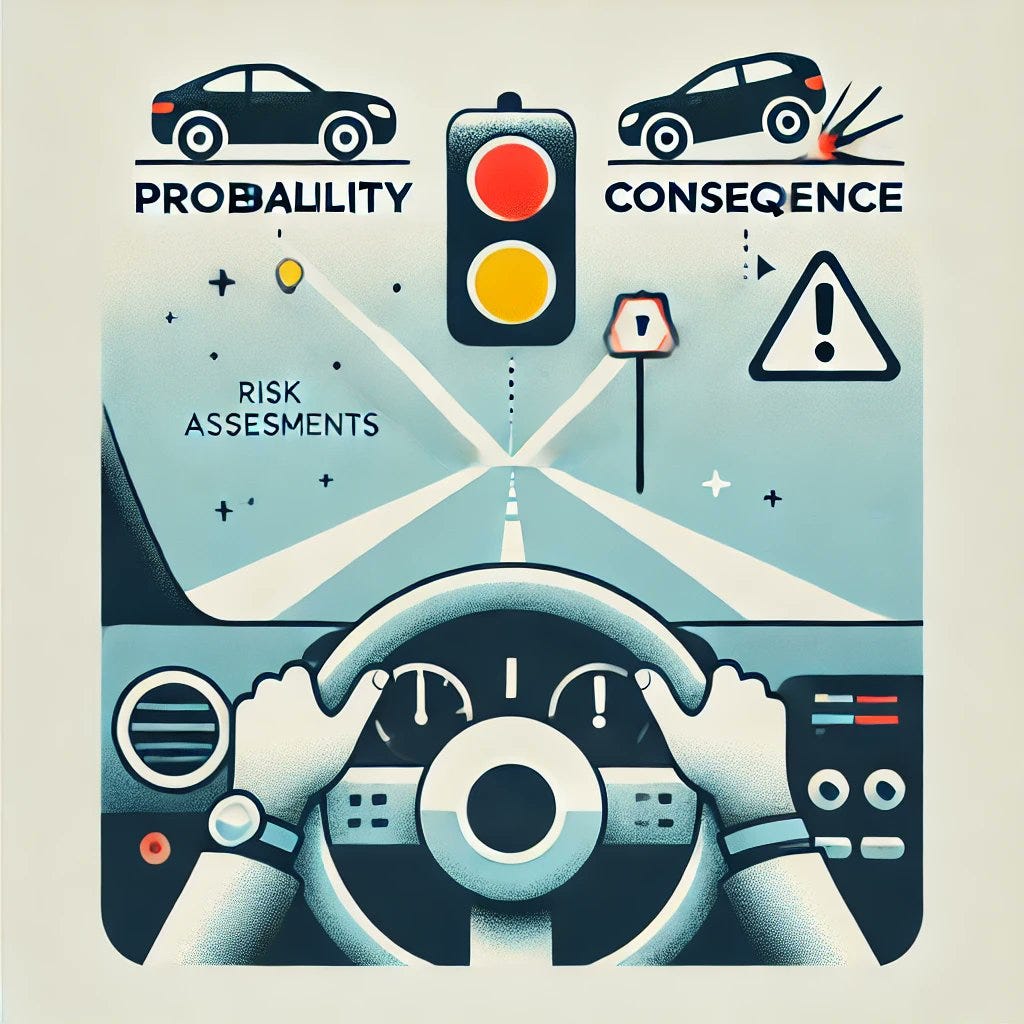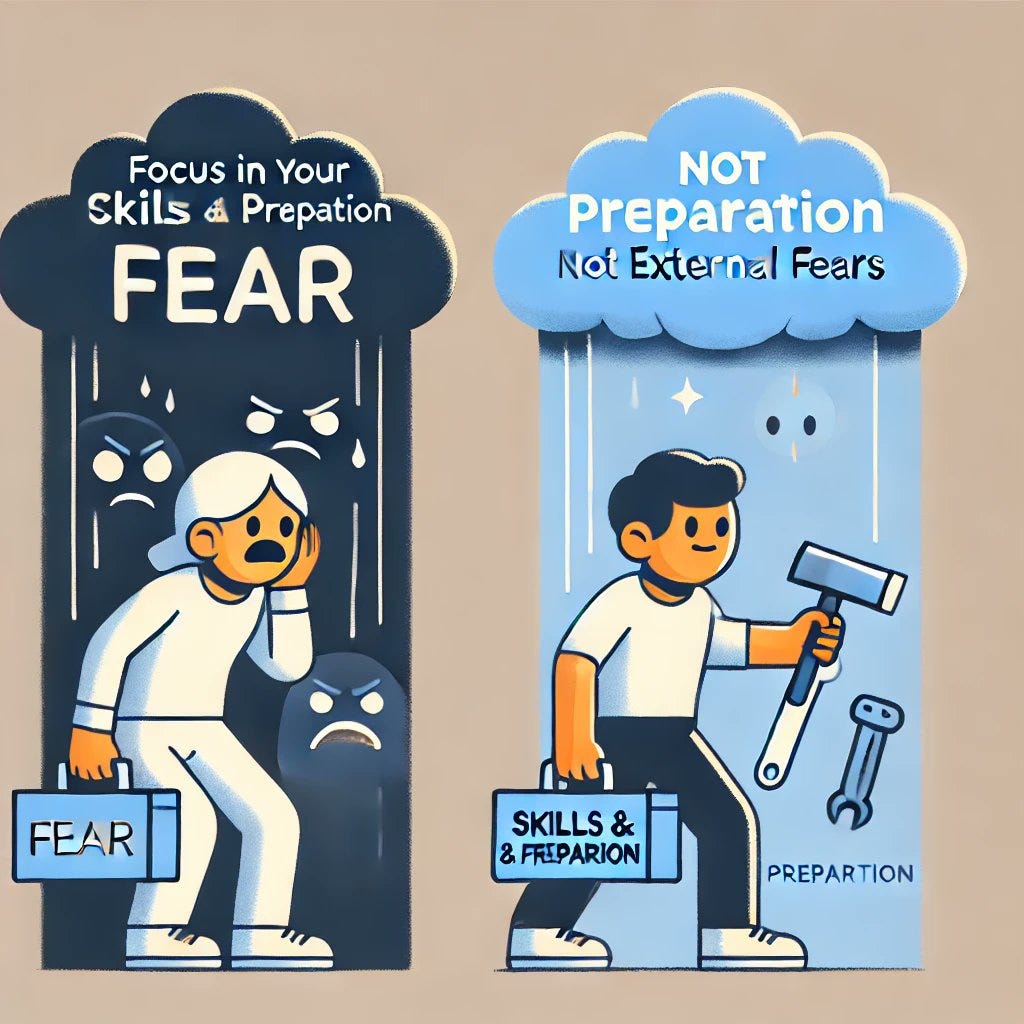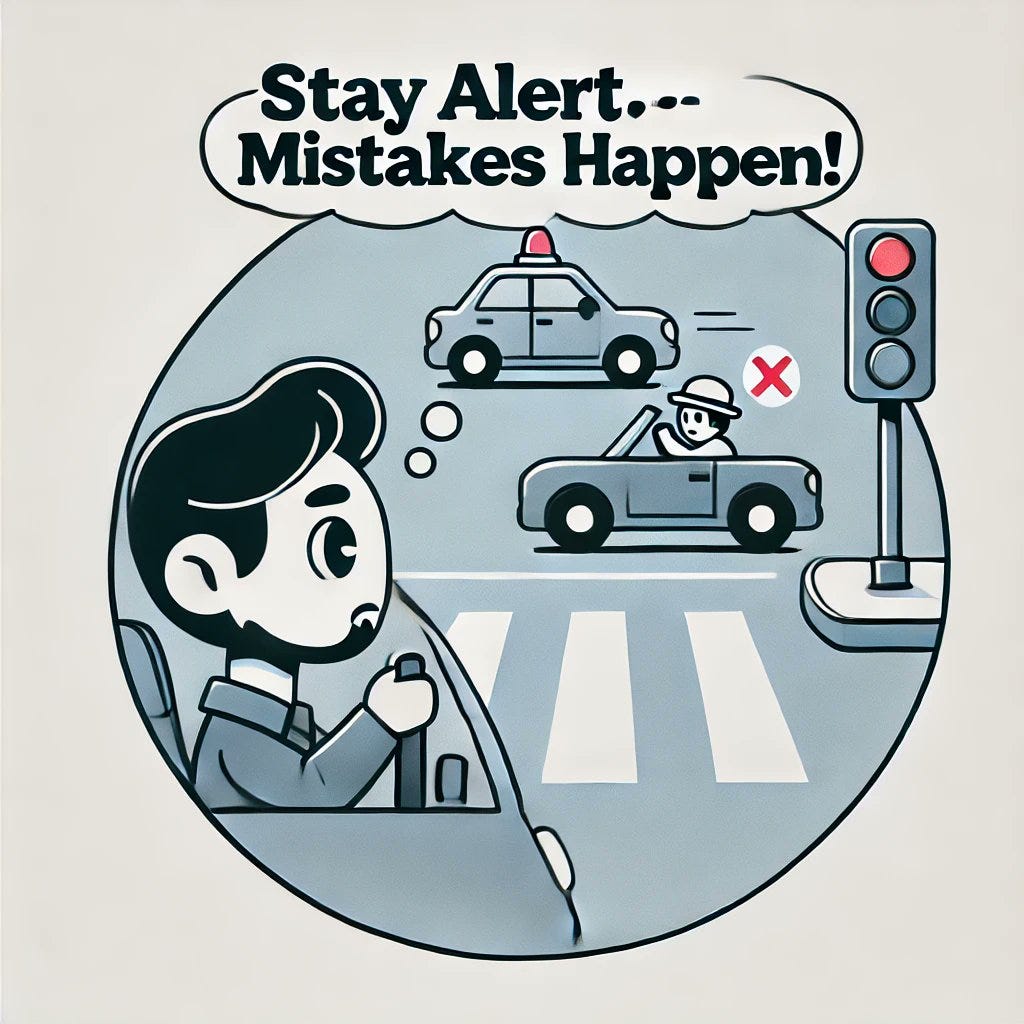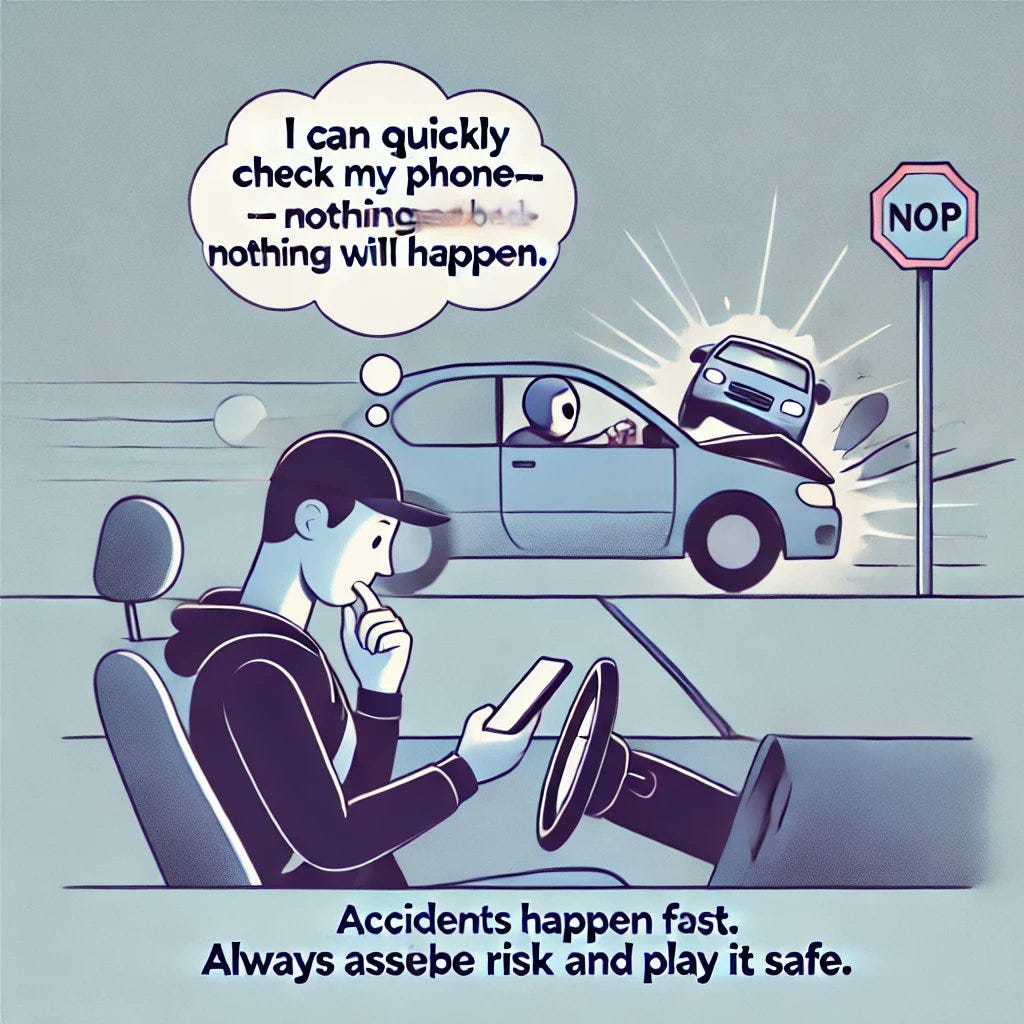Understanding risk rationally and avoiding fear is all about shifting from emotional reactions to logical thinking.
Fear makes risks seem bigger than they are.
Example: Many people fear flying, but statistically, it’s far safer than driving. Ask yourself, "Is this fear based on facts or just my feelings?"
Let's take an example of a man walking on stones in a park ( pic 1 on the left ).
He will walk comfortably without any fear.
Now, look at pic 2 on the right. The bar at the construction site is of the same width as the stones but now he's afraid as it is at a height.
Now, look at pic 3 !!! Fear makes us lose control and increases anxiety.
Staying calm gives us control of the situation. By focusing on the situation, we don't lose control of the situation.
Every risk has a probability (chance of happening) and a consequence (impact if it happens).
By knowing the probabilities of happening, we take action to minimize the consequences.
Example, Speeding in Rain
Probability: If the roads are wet, the chance of losing control increases.
Consequence: A minor skid might be recoverable, but a major loss of control could result in a serious crash.
How Smart Drivers Handle It: Smart Defensive drivers slow down, increase their following distance, and avoid sudden braking.
Checking Blind Spots Before Changing Lanes
Probability: Another vehicle might be in the blind spot.
Consequence: A minor scrape or a severe side-impact crash at high speed.
How Smart Drivers Handle It: Drivers check mirrors, turn their head etc. Smart drivers constantly evaluate both the probability and consequence of risks and adjust their behavior to minimize danger.
Often I hear a comment that, Indian roads are risky, we need to stay at home etc. Instead of avoiding risks entirely, we need to manage them with smart actions.
Example: If you're afraid of crashes while driving, follow the right defensive driving methods.
I had pinned so many videos on my profile.
Focus on prevention and preparation, not fear.
Fear comes from feeling out of control—but most driving risks are within your control.
Example, Heavy rain can make roads slippery, but driving slowly and keeping a safe distance reduces the risk.
Solution: Focus on your skills and preparation, not external fears.
This is where there is another risk that is - Optimism Bias creep in.
The moment we start to become comfortable, we tend to loosen our control and take risks.
Optimism Bias Mistake: “I’ve never had an accident, so I must be a great driver.”
Reality Check: Even great drivers can be hit by reckless ones.
Solution: Stay alert and always assume mistakes can happen (from you or others).
Think: “I’m a careful driver, but that doesn’t mean I’m invincible.”
Optimism Bias Mistake: “I can quickly check my phone—nothing bad will happen.” Reality Check: Accidents happen in split seconds—even a glance away is dangerous. Solution: Always assume that risk exists and play it safe.
Think: “If something goes wrong, will I be able to react in time when I'm on my phone?”
Optimism Bias Mistake: “I’ve been speeding for years and never crashed, so it must be safe.”
Reality Check: Speeding increases accident severity—even if you’ve been lucky so far.
Solution: Look at actual crash data instead of relying on your personal experience.
Think: “Just because I got away with it before doesn’t mean I always will.”
To conclude,
1. Being too fearful makes you freeze up.
2. Being too confident makes you reckless.
3. The sweet spot is being confident but aware of risks.
Think: “I trust my skills, but I still drive carefully because anything can happen.”
Too much fear is not good and too much optimism bias is not good. We need to have a balance and maintain the sweet spot of being realistic and driving accordingly. Reduce the risk with smart habits:
Drive within speed limits.
Maintain a safe distance from other cars.
Stay alert and avoid distractions (e.g., no texting)
Drive defensively—assume other drivers might make mistakes.
Always give yourself time and space to react.
Drive with awareness, not overconfidence/optimism biased





